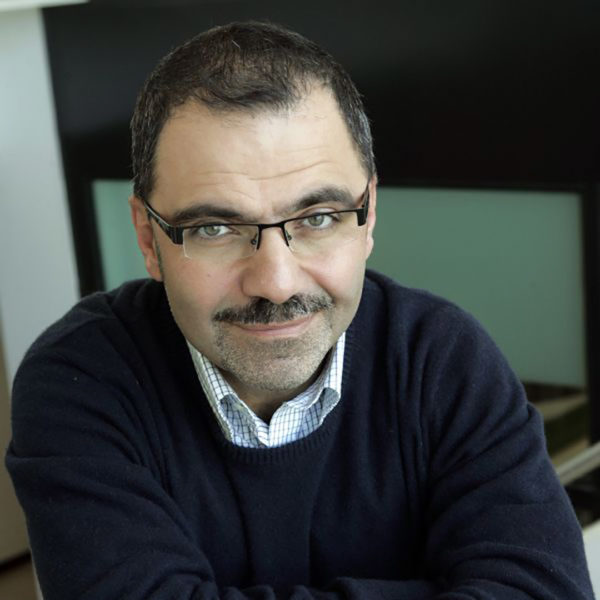For Professor Karén Egiazarian Tampere is an international place where people from many different countries gather to study and work. Egiazarian came to Tampere in 1993 and is one of the key figures of the Tampere Imaging Ecosystem.
Mr. Karén Egiazarian (Eguiazarian):
– Professor, Head of Signal Processing Research Community (SPRC) and Computational Imaging Group at Tampere University of Technology (TUT).
– Also CEO at Noiseless Imaging Ltd.
Tell us about your team, the Computational Imaging Group, at TUT?
– Our research area is digital image processing. The mission of the group is theoretical and applied research, different from the traditional image processing. We have a special emphasis on applied mathematics, optics and human perception.
What are the main focus areas of your research?
– In short: imaging algorithms. I work on image and video restoration, for example restoration of degraded image content or filling in missing information, like denoising, deblurring, demosaicing and so on. Other focus areas are image and video compression and image quality assessment.
What kind of challenges you are trying to solve?
– Noise reduction is becoming more and more important challenge nowadays in any imaging and sensing device. The demand for higher image quality is growing and the devices are getting more sophisticated, pixel-size of sensors smaller.
– The main challenge is to design image or video restoration algorithms that successfully recover information that is not present in images produced by imaging sensor.
What kind of impact will your research outcome have?
– The main purpose is to improve the final image quality – like sharpness, contrast, accurate detail and colour reproduction – to obtain the best output from various kinds of hardware. This also provides improvements on further processing, such as image or video recognition and tracking and overall better decision-making based on the data, say, for example autonomous vehicles coping with challenging weather conditions.
– The applications of the research are in consumer electronics, mobile imaging, microscopy and remote sensing. For example, the image quality of mobile devices will come closer to those of professional cameras. There will be smarter and smaller sensors and they can be used anywhere to provide image or video data.
Examples of research partners and projects of your team?
– There are a lot of interesting companies in the neighbourhood, and it makes sense to cooperate. Mobile phone manufacturers of course aim at improving the quality of imaging, and we’ve worked together with Nokia and Microsoft, nowadays with Huawei.
– We participate in various EU networks and Marie Curie projects, with partners from many European universities and companies.
What is your favourite cutting-edge project?
– Computational imaging without lens project (CIWiL), to replace camera lenses with extremely thin diffractive optical elements. It is an ambitious project that opens endless possibilities in the field of imaging systems. It received a grant from Finland Centennial Foundation and Jane and Aatos Erkko Foundation.
What about your background?
– I’m from Armenia, with MSc from Yerevan State University in1981 and PhD from Moscow State University 1986. I came to Tampere in 1993 for collaboration with Professor Jaakko Astola in area of nonlinear signal processing, and my Doctor of Technology degree is from TUT, 1994.
Did you find any particular thing positively surprising when you moved to Tampere?
– Tampere is an international place with a lot of foreigners studying and working here. I have been very satisfied with my work and the people.
– Another thing: if you need a boost, sauna and swimming in the lake is the thing to do, especially winter swimming. In our company Noiseless Imaging arranging a sauna event at the nearby lake is the best option for brainstorming!
How did your family integrate to Tampere?
– My wife is a doctor, she got a medical license in Finland and works now at the Tampere University Hospital. Our children were quite young when we moved to Tampere. They learned the language, went to school and merged easily, I think. They have graduated from the University of Helsinki, faculty of pharmacy.
What is your fondest memory in your career?
– There are plenty of good memories, but maybe publishing the first book in 1995 should be mentioned first (Astola, Agaian & Egiazarian: Binary Polynomial Transforms and Nonlinear Digital Filters). I came to Tampere to work on this book and it was really interesting.
– The Honorary Doctoral Degree at Don State Technical University in Russia in 2015 is another thing I’d like to share. I was invited there to provide a course, they took me to a meeting room with a honorary doctor hall of fame – and surprise, there was also a painting of my face there!
– In 2016 I became the editor of Journal of Electronic Imaging. It changed my life – it means so much extra work, but it is a service to the community.
How do you see the future?
– There is digitalization everywhere, smart cameras, autonomous systems and self-driving vehicles… things we’ve seen in the science-fiction movies will be real in the near future. What I’d like to see is a nice balance of AI and human intelligence so that AI solutions are used as tools and human intelligence will not be forgotten.
Author: Päivi Stenroos

Professor, Head of Signal Processing Research Community and Computational Imaging Group at Tampere University of Technology (TUT)